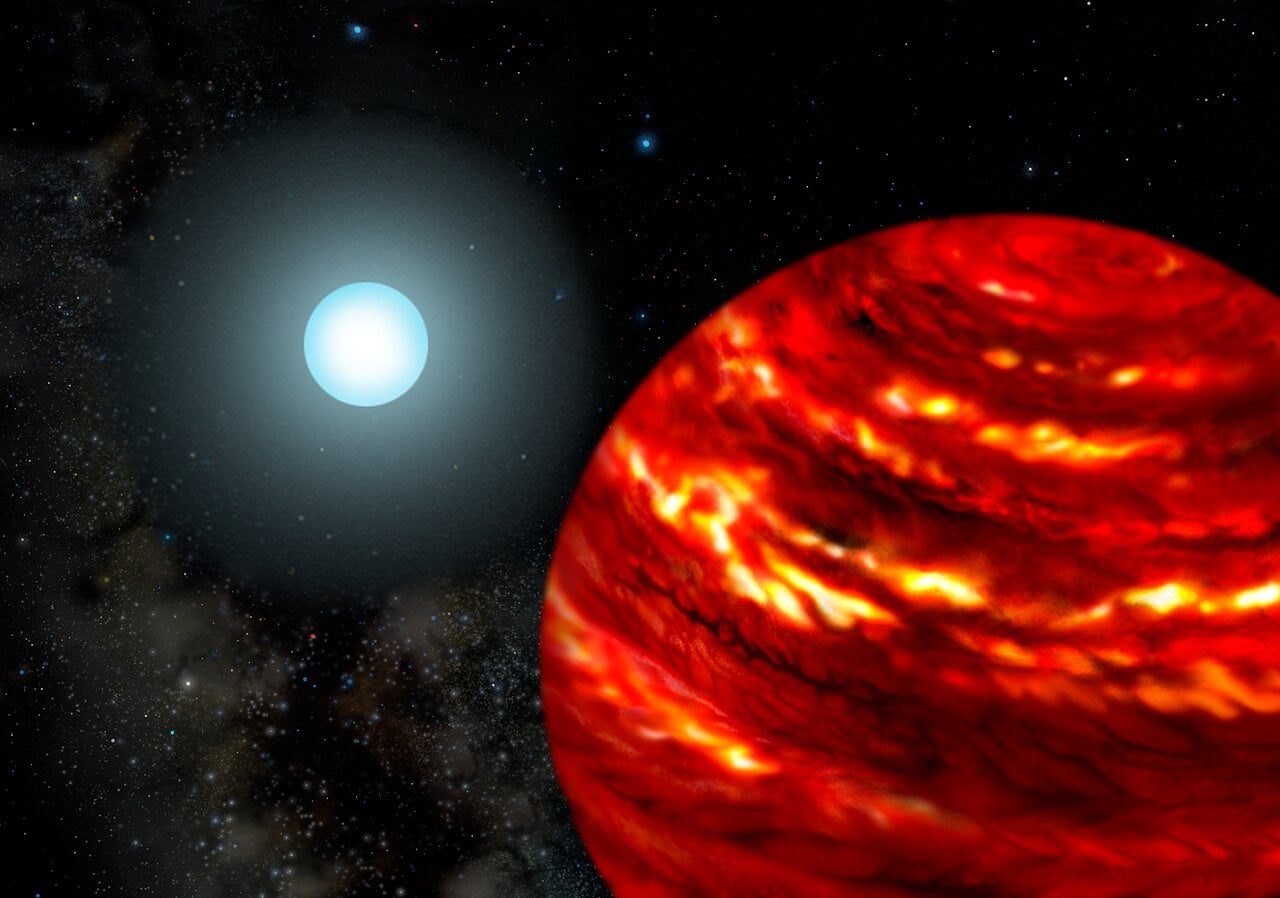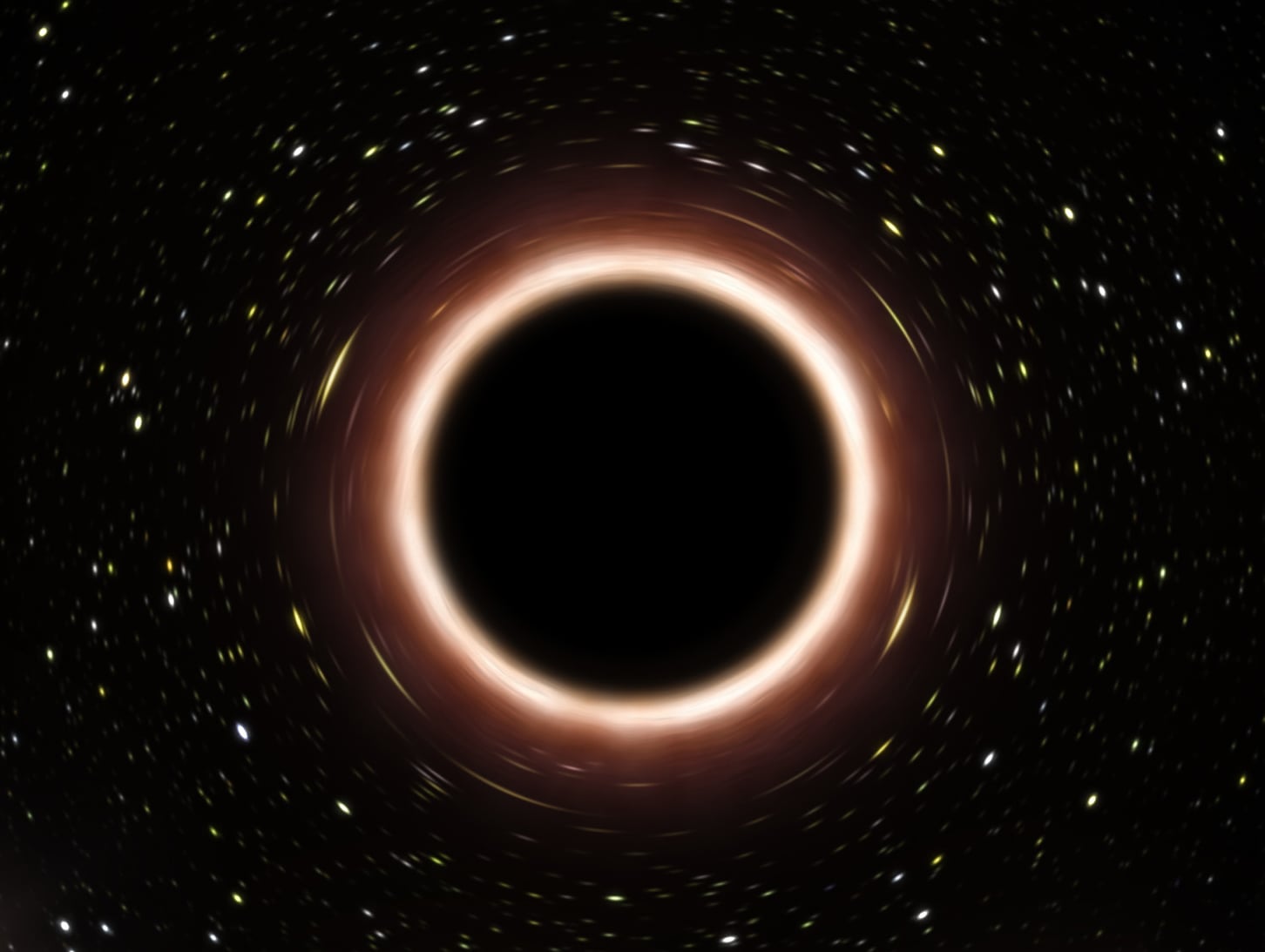To date, 5983 exoplanets have been confirmed in 4,470 star systems, with more than 15,000 candidates awaiting confirmation. Combined with next-generation telescopes like the James Webb Space Telescope (JWST), this massive census is ushering in a new era of astrobiology studies. By analyzing spectra obtained from exoplanet atmospheres, scientists are now able to characterize them and detect chemical signatures that could be indications of life and biological processes (aka. biosignatures). These surveys are also a way of learning more about the evolution of planets and their climates over time.
According to a recent study by a team from the University of California, Riverside, exoplanets could also serve as a tool to investigate one of the biggest cosmological mysteries today: the mysterious mass known as Dark Matter. According to the standard model of cosmology, the Lambda Cold Dark Matter (LCDM) model, Dark Matter accounts for 85% of the Universe's mass. As the researchers argue, Dark Matter may collect in the cores of Jupiter-sized planets, which could affect their evolution over long periods of time.
The research was conducted by Mehrdad Phoroutan-Mehr, a PhD student with the Department of Physics and Astronomy at the University of California, Riverside, who works with Hai-Bo Yu, a professor of physics and astronomy. He was joined by Tara Fetherolf, a Postdoctoral Scholar and NASA Postdoctoral Program Fellow from UC Riverside's Department of Earth and Planetary Sciences. The paper describing their findings was published in Physical Review D.
 Gemini Observatory’s Planet-Finding Campaign finds that, around many types of stars, distant gas-giant planets are rare and prefer to cling close to their parent stars. The impact on theories of planetary formation could be significant. Credit: Gemini Observatory/NOIRLab
Gemini Observatory’s Planet-Finding Campaign finds that, around many types of stars, distant gas-giant planets are rare and prefer to cling close to their parent stars. The impact on theories of planetary formation could be significant. Credit: Gemini Observatory/NOIRLab
According to the Weakly-Interacting Massive Particles (WIMPs) model, DM particles are extremely large and only interact with normal matter via gravity, the weakest of the four fundamental forces (the others being electromagnetic, weak nuclear, and strong nuclear forces). The theory also posits that these particles are extremely massive and do not annihilate each other when they interact. Phoroutan-Mehr and Fetherolf chose to focus on this model to examine how superheavy DM particles could interact with exoplanets by collecting in their cores and collapsing into black holes.
"If the dark matter particles are heavy enough and don't annihilate, they may eventually collapse into a tiny black hole," said Phoroutan-Meher in a UC Riverside News release. "This black hole could then grow and consume the entire planet, turning it into a black hole with the same mass as the original planet. This outcome is only possible under the superheavy non-annihilating dark matter model.
According to their analysis, DM particles could lose energy through scattering in the planetary interior, causing them to be captured by the planet's gravity. Since these particles are non-annihilating, they would accumulate at the planet's center, eventually reaching several Solar masses and collapsing into a black hole. They also chose to focus on giant planets similar in mass to Jupiter (or greater). These planets are well-represented in the current exoplanet census, accounting for 33% of all confirmed exoplanets. Said Phoroutan-Meher:
In gaseous exoplanets of various sizes, temperatures, and densities, black holes could form on observable timescales, potentially even generating multiple black holes in a single exoplanet's lifetime. These results show how exoplanet surveys could be used to hunt for superheavy dark matter particles, especially in regions hypothesized to be rich in dark matter like our Milky Way's galactic center.
 Artist's impression of Sagittarius A. Credit: ESO/M. Kornmesser*
Artist's impression of Sagittarius A. Credit: ESO/M. Kornmesser*
So far, astronomers have only detected black holes that were at least as massive as our Sun, leading to the predominant theory that black holes must be at least this massive. Similarly, conventional thinking has it that black holes with the same mass as a planet could only form in the early Universe, which are known as primordial black holes (PBHs). Previous research has suggested that these miniature black holes could be present in planets, asteroids, and other celestial objects. They are also considered a possible candidate for Dark Matter.
In the past, scientists have observed objects like the Sun, neutron stars, and white dwarfs to investigate DM, as different models suggest that it could affect these objects in different ways. According to Phoroutan-Mehr, exoplanets have not been used much in DM research since data on them was lacking. However, this has changed in recent years thanks to the discovery of thousands of planets beyond our Solar System. Since astronomers have not detected any gas giants collapsing into black holes (including Jupiter), Phoroutan-Mehr states that this can help scientists rule out or refine dark matter models such as the superheavy non-annihilating dark matter model.
He also noted that another possible effect of DM on giant planets in our Solar System is that it could heat them or cause them to emit high-energy radiation, making this a testable hypothesis:
If astronomers were to discover a population of planet-sized black holes, it could offer strong evidence in favor of the superheavy non-annihilating dark matter model. As we continue to collect more data and examine individual planets in more detail, exoplanets may offer crucial insights into the nature of dark matter. Today's instruments aren't sensitive enough to detect these signals. Future telescopes and space missions may be able to pick them up.
Further Reading: UCR, Physical Review D

